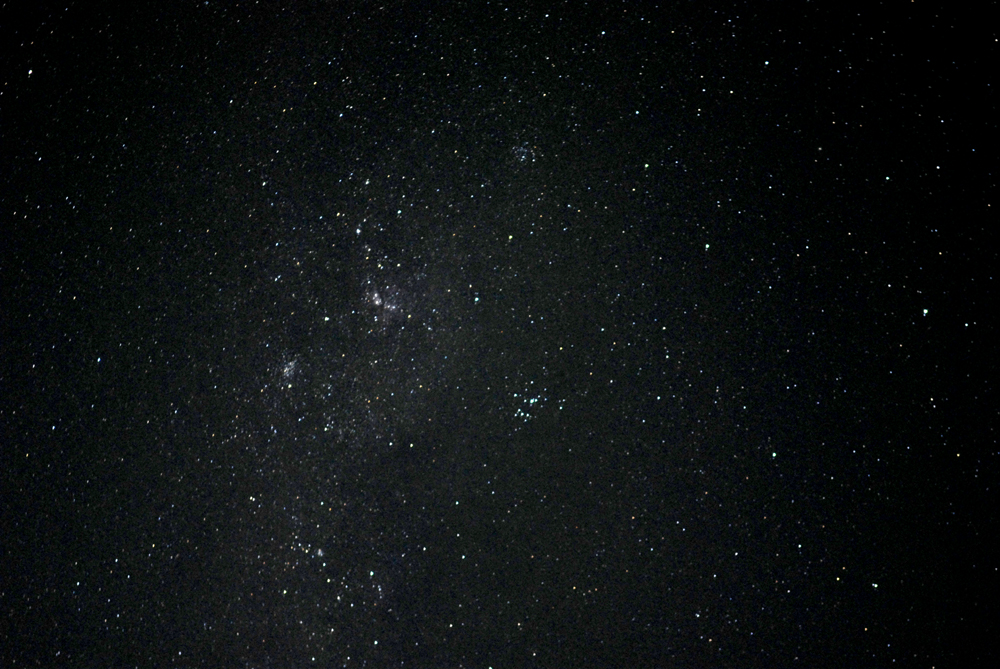
NGC3372/ NGC3114/ NGC3532/ IC 2602

NGC3372 - RA: 10hrs 43min 48secs Dec: -59º 52' 00" Mag: 5.0 Distance: 9000 light years Constellation: Carina
IC2602 - RA: 10hrs 43min 12secs Dec: -64º 24' 00" Mag: 1.9 Distance: 700 light years
NGC3114 - RA: 10hrs 2min 42secs Dec: -60º 07' 00" Mag: 4.2 Distance: 1000 light years
NGC3532 - RA: 11hrs 6min 24secs Dec: -58º 39' 59" Mag: 3.0 Distance: 1700 light years
This wide-field picture was taken on the 8th of February 2007 on Palm Beach north of Sydney at about midnight. It demonstrates the eastern portion of the constellation Carina. The elongated diamond in the constellation formed by Miaplacidus, υ, ω and θ carinae (the Southern Pleiades, IC2602) is visible on its side in the right half of the picture. But most dramatically shown is the young open cluster with nebulosity, NGC3372 which was a naked eye object visible in the skies above the deserted beach. At 2 o' clock to 3372 is another small open cluster, NGC3114, and at 8 o' clock to 3372 is NGC3532. This cluster of clusters in the Milky Way was one of the most breathtaking sights in the southern hemisphere that I saw for the first time on this trip to Australia. The conditions that night were wild to say the least, there was high cloud and high winds and this picture was snapped in between passing clouds and rain showers. Camera was a Nikon D200, 17-55mm Nikkor lens set at 55mm, f2.8, ISO1600, 30 second exposure, mounted on a tripod with no tracking and no guiding. The high-sensitivity setting caused the picture to be grainy, but was necessary because of the limited exposure time. Minimal post-processing consisted of dark correction using the levels command in Photoshop and midtone enhancement using the curves command. The original picture was 10 megapixels in size, this was cropped to 1000x700 size so as to fit onto a webpage. Once again, a thousand thanks to my co-collaborators, Alan Halloran and Brett Miller.
HOME PICTURES: Deep Sky PICTURES: Solar system PICTURES: Wide field